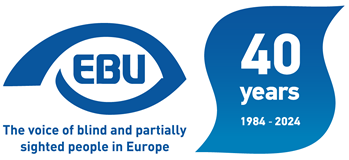If we are new in a building, we need information to help us finding our way: Where am I? Where can I find something or someone? Who/what is hidden behind a door? Where does a path lead to? Etc. But also in buildings we know better, there is information we depend on in order to be able to use various facilities. For example to know what happens if I press a certain button in a lift or at a self-service machine, I need something to tell me its function every time I use it. Since this information is so essential for orientation, its provision in public areas is such a matter of course, that we do not even realize how lost we would be without it.
For blind persons, this information is all the more important. But how can they perceive it? If you cannot see something, you need to be able to hear or touch it. For many situations in public areas, tactile information is particularly useful.
One possibility of providing such tactile information, are relief characters, numbers or other simple symbols. For short information, this has a huge advantage making it indispensable: Persons, who are used to visual signage, can - as they lose their vision - recognize the characters by touch. If sufficient visibility is provided as well, they can additionally use their residual sight. Moreover, all sighted persons benefit from it.
However, relief signage also has a big disadvantage: It is not made to be read by touch. The structure of every single letter needs to be touched. This makes reading exhausting and it takes very long. With Braille, this is totally different. It was developed specifically to be perceived by touch. Each letter is a combination of raised dots, which can be perceived at once with a fingertip. This facilitates fluent and swift reading by moving a finger forward along the lines just like the eyes of a sighted reader.
For many people it is difficult or impossible to learn Braille, because e.g. they have already reached an advanced age when they become blind or their blindness is a symptom of diabetes, which also causes paraesthesia of the fingers. For these people, relief signage is very important.
But for those who can read Braille, it is incomparably more efficient to read and therefore the only really equal tactile alterative for written text.
By Doris Ossberger

